Exiled Queen Calls On Military Forces To ‘Stand With Nation’

Iran’s exiled queen Farah Pahlavi has once again called on military forces not to allow the Islamic Republic’s authorities to use them as “tools of repression.”

Iran’s exiled queen Farah Pahlavi has once again called on military forces not to allow the Islamic Republic’s authorities to use them as “tools of repression.”
In an audio message on her twitter account on Wednesday, Pahlavi addressed police forces, the army, the Revolutionary Guard, paramilitary Basij forces and plainclothes agents to imagine their own sisters, brothers, fathers and mothers before their eyes, urging them not to let the leaders to make them a tool to suppress people.
Describing the regime’s crackdown on popular protests – sparked by the death of 22-year-old Mahsa Amini in police custody -- as "brutal and inhumane," she said people from different walks of life and with different ideologies “have risen up to eliminate the oppression."
"You are also from this nation, so be with this nation," she noted.
Late in September, she released another similar message, lauding popular protests against “forces of darkness” and decried “the harrowing savage crackdown” on the nationwide rallies.
Her son, exiled Prince Reza Pahlavi, said on Tuesday that “Multiple reports indicate the spread of strikes from cultural and educational sectors to the service and industry sectors,” calling it “a step in the right direction.” “Nationwide strikes alongside nationwide protests will bring this regime to its knees,” he added.
He also called on US President Joe Biden not to enter an agreement with Tehran that would financially benefit the Islamic Republic’s repression machine.
As protests in Iran continue well into their third week, pundits and politicians speculate that Iranians are more angry than scared, warning that suppression will make the protests more violent.

A regime insider's account of police brutality as he experienced in the streets of Tehran, October 4, reached Supreme Leader’s office, and proved critics right.
Some also used his account to argue that the killings of young women like Mahsa Amini, who was fatally injured in “morality police” custody, and Nika Shakarami, a 16-year-old girl who was taken during the protests in Tehran and found dead ten days later with evidence of torture, are entirely possible at the hands of brutal security forces.
Javad Moguei, a hardliner filmmaker whose career could be summarized as trumpeting the Islamic Republic's ideology, wrote about what happened to him in a long Instagram post which has disappeared from his page, however, screenshots of his post, as well as a copy of it posted on Telegram on the account of the reformist Saham News, are still available on social media.
Moguei starts his story with his visit to the Enghelab (Revolution) Square where he went with his friends to buy some books. "At the Revolution Square the number of Basij militia, special riot troops, the police and the IRGC's plainclothes officers were several times more than the people who were walking on the sidewalks in the busy roundabout," Mogui remembered.
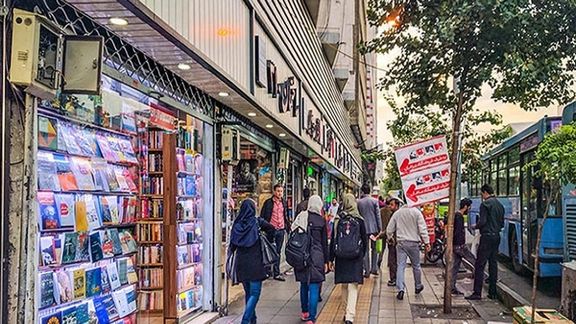
While shopping for books, his friend Ali told him how the Basij was beating and sexually insulting young girls in the streets during the past 10 days. His other friend Mehdi told him that this is the Basij's usual practice during every round of unrest.
"At the Quds intersection [about half a mile from the square] I head a girl screaming. A police officer threw him in an open gutter in the street and several Basij members started to beat the girl who weighed less than 60 Kilograms. I rushed to the scene and shouted at them: Don't beat her! She will die," Moguei remembered, adding, "They told me it was none of my business. And then they shot me in the hand and chest with shotgun [birdshots], and I fell on the ground."
Moguei added: "A motorcyclist offered to take me out of the scene and warned that the forces may take me away. I told a Basij militiaman once again not to beat the girl as she might die. Then several militia members attacked me calling me mother f**ker. I kicked him and then all of them attacked me. There were about 10 of them. Then they threw me into a minibus. Several other detainees were also on board. Then an older man came in and asked my name and I said my name."

The man must have known Moguei and his brother who is a top Basij commander in Karaj near Tehran. "He blindfolded me and told me that I should have not intervened. When they inspected my phone and saw the picture of a well-known IRGC martyr on my screen saver, they stopped what they were doing. They took me off the minibus and took me on board another van. After a while I realized that the van was circling around the area. I saw from beneath the blindfold that they were going through the same streets again and again. I had a headache as they had hit my head on the wall or kicked it," Mogui remembered.
"Then the van stopped at the Revolution Square and a man with a goatee came on board. He asked me about what had happened. I told him about the Basij who insulted my mother. He didn't quite believe me. I asked him whether he was from the IRGC or the Police? He did not answer." The man with the goatee probably recognized Moguei as a well-known hardliner who frequented Supreme Leader Ali Khamenei's headquarters. "He offered me water and even dinner. I refused to accept. I sat there blindfolded for several minutes while he apologized and handed back my phone."
A close relative of Khamenei's Chief of Staff Mohammadi Golpayegani called. Moguei's friends must have contacted Khamenei's office to tell them about his arrest. "I told him that I was still dizzy. The paramedics had arrived and the man with the goatee loudly prayed that nothing more serious had happened to me. He came to me and said my mother was like his mother and suggested that I file a complaint against the Basij the next day. It was only after the examination by paramedics that I found out I was shot 12 times. What if they hit me in the eye?"
"My friends joined me now and I insisted to go back to where I was shot to see the Basij. We went there and there were only the police. The Basij had already left. But I will go there every day hoping that I will see the attackers once again."
Moguei was lucky not to be shot in the head or in the eye. He was also lucky because the Basij did not kidnap him and took him with them to drop him at a remote place like Nika. He was luckier as his friends were well connected and could call the only place with real influence on thugs. Mogui just tasted a few drops of his favorite regime's own syrup. The rest of the population are extremely unlucky, left in the hands of those who are not accountable for what they do.
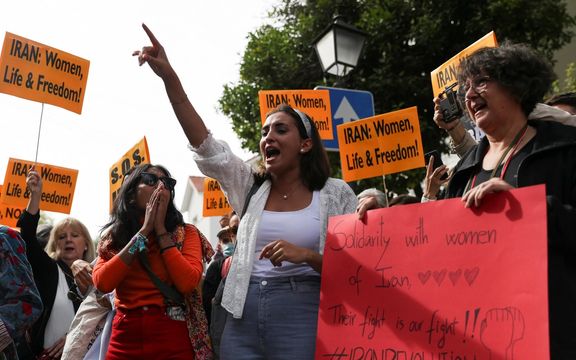
Over 100 female protesters held at Tehran’s Qarchak Prison have been systematically abused and kept in inhumane conditions since their arrest two weeks ago.
Speaking to Iran International, a source who is familiar with the prisoners’ circumstances said they have been strip searched, repeatedly interrogated, threatened by interrogators with losing their once daily two-minute phone calls to their families.
According to the source who did not want to be named for their safety, detainees have been kept indoors in unsanitary conditions throughout this time. The lights are never turned off in the shed even at night, and there are only three toilets and showers.
“Women have developed various infections as there are no facilities for washing and drying clothes and underwear … A few women found head lice in their hair,” the source said.
On Wednesday, a religious and public holiday, protesters took to the streets again in several cities including Tehran, Esfahan, and the religious city of Qom in the evening. The video from Isfahan shows people chanting “Women, Life, Liberty” while in another video a group of protesters are seen chanting “Don’t be afraid, don’t be afraid. We stand together!” in Qom.
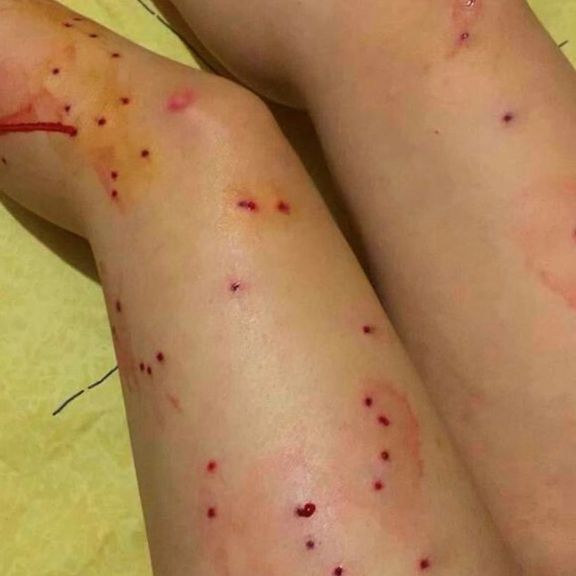
Authorities have not released any information on the number of detainees, those injured and killed in the protests that began nearly three weeks ago following the death in custody of Mahsa Amini who was arrested for not wearing her hijab “properly”.
A top Revolutionary Guards (IRGC) commander, Brigadier General Ali Fadavi, said Tuesday that detainees are around 15 years old on average while Tehran’s Public and Revolutionary Prosecutor Ali Salehi announced that 400 of those detained in the protests who “were repentant” have been released.
Iran Human Rights, a Norway-based rights organization, said Tuesday that at least 154 protesters, including nine children, have been killed by security forces during the protests.
Very little is known about most of the victims as families are pressured to remain silent if they want the bodies of their loved ones to be handed over to them.
Documentary filmmaker Javad Moguei, a hardliner and Khamenei devotee, has published a very grim account of the great violence against protesters by security forces’, IRGC’s Basij militia, and their plainclothes helpers on Instagram in the past three days.
Moguei said a police officer shot 14 plastic bullets all over his chest and arms in a matter of seconds only because he had objected to the beating of a young girl protesting on the street with no hijab.
“Don’t beat her, she will die, I cried. One of them told me to mind my own business and then my body went on fire. The officer was shooting at my chest and arms nonstop,” an apparently disillusioned Moguei who was subsequently thrown into a van and taken away wrote in one of his posts. He said he was released and officials apologized to him when he was recognized.
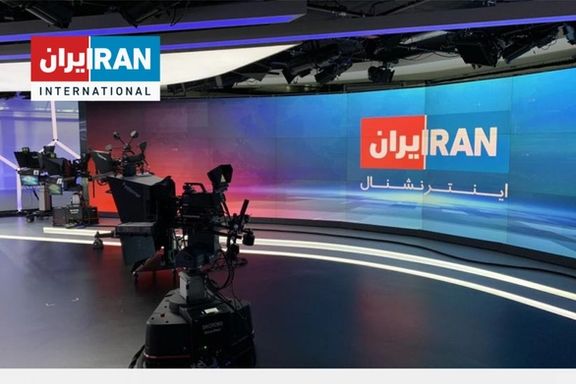
After Iran resorted to orbital jamming to limit access to Iran International, the news network has launched a lawsuit to legally pursue the case through international bodies.
Iran International said in a statement on Tuesday that the Islamic Republic has, in recent days, resumed orbital jamming of international satellite transmissions, which is against international law.
The signals directed at satellites are beamed into space from a site near Karaj, west of Tehran, amid escalation of the protests – sparked by the death of Mahsa Amini, the 22-year-old woman who was killed in custody of hijab police.
Iran International CEO said that Tehran’s move is a blatant violation of international treaties and regulations of satellite broadcast rights, noting that the Islamic Republic had barely resorted to orbital jamming after 2009 and only used terrestrial jamming to prevent people from watching satellite TV channels.
Tens of million of people In Iran watch satellite TV channels such as Iran International because television in Iran because only the government owned TV is allowed to broadcast, echoing official propaganda.
A non-profit Iranian American organization the National Union for Democracy in Iran (NUFDI), called on US Secretary of State Antony Blinken Tuesday to revoke the current waiver of secondary sanctions relating to dealings with the Islamic Republic’s state Broadcaster – or IRIB -- and implement sanctions on Tehran’s propaganda apparatus.
The Obama administration struck a deal in 2013 with Iran that waived existing sanctions on the IRIB as part of an agreement reached under the International Telecommunications Satellite Organization, or ITSO.
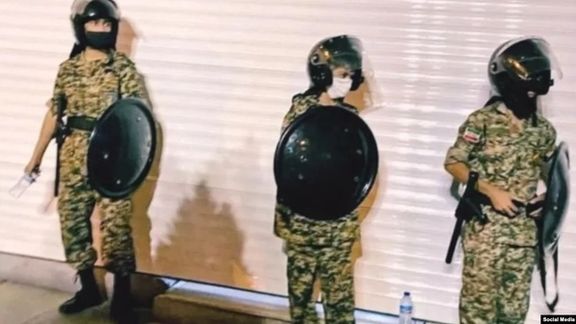
One of Iran’s largest independent anti-poverty charities says a large number of minors have been recruited to attack protesters in exchange for a few bags of essential foods.
Over 800 members and supporters of the Imam Ali Society (IIS) issued a statement on Wednesday, saying that the Islamic Republic’s authorities have employed children, who used to be under the protection of IIS, as part of their club-wielding forces against the antigovernment protesters.
Instead of "teaching peace and friendship,” the Islamic Republic recruited them and gave them batons to crack down on the popular protests, IIS members said.
The statement was released following the publication of photos of children under 18 years of age wearing helmets and carrying batons in some streets of the capital Tehran to suppress protesters. In some pictures, some of these children are not even wearing shoes, which social media users have described as a sign of their families' "poverty".
The Imam Ali Society was an independent NGO with a nationwide network doing concrete charity work, while the state has official charities that have turned into economic conglomerates.
Iranian judiciary arrested Sharmin Meymandinejad in 2020, who founded the Imam Ali Popular Students Relief Society in 1999, with two other members of the society on charges of “insulting” the founder of the Islamic Republic Rouhollah Khomeini and his successor Ali Khamenei as well as “acting against national security.” Iranian hardliners have alleged the society is aligned with foreign powers hostile to Iran.
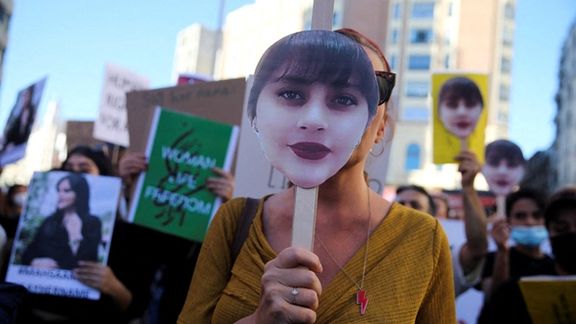
Iranian officials have been trying to question whether Mahsa Amini was killed in police custody and this attempt has reached Hezbollah leader Hassan Nasrallah.
Nasrallah, whose militant movement was created by Iran in early 1980s and has been receiving money and weapons from Iran ever since, told media in Lebanon that Amini’s death was a “vague incident”, and it was a plot to weaken the Islamic Republic and create regional tensions.
“The Iranian state is a target and so any incident is exploited to incite people against this state,” Nasrallah claimed.
The nationwide protests and a wave of civil disobedience that followed Amini’s death has led to a serious challenge for the Islamic Republic. Security forces have killed more than 150 protesters and innocent onlookers in the streets, which could fuel more unrest in the coming weeks.
Any weakening of the Iranian regime would be dangerous to its proxies, such as the Hezbollah that almost fully depend on Tehran’s support.
Iranian officials first tried to argue that the 22-year-old woman arrested by the hijab police had an existing illness, which they said caused her to go into a coma in a police station.
After Iran International published her hospital CT scan showing a broken skull, this version could not be supported any longer.
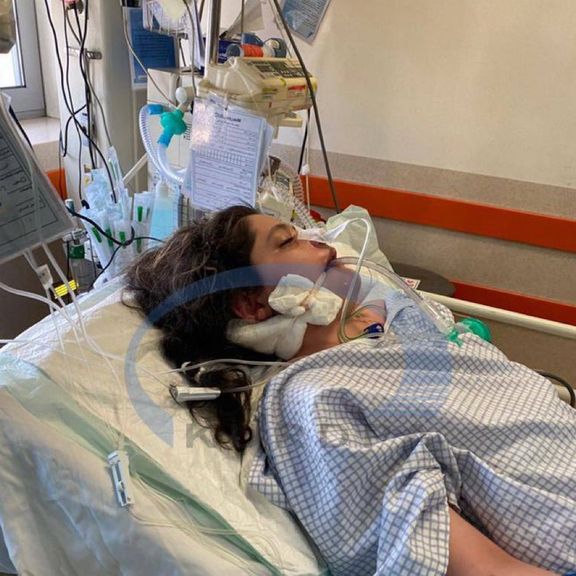
On Tuesday, the chief of Iran’s Judiciary Mohsen Ejei tried to argue that Mahsa Amini was arrested in full public view. However, by all indications, she was hit in the head after she was pushed into a police van where there were no witnesses, or none that has dared to speak out.
One eyewitness who spoke with Amini in the police station told Iran International September 26 that she was complaining of pain in the head before she passed out and taken to hospital, where she arrived in a coma.
The most incredible, however, claim came from an ‘analyst’ on Iran-backed Al Manar TV in Lebanon. While the video of his remarks exists, we could not identify him.
The TV guest said that Amini was an Israeli agent because she was a Kurd with connections to Kurdish insurgent groups fighting against the Islamic Republic. Presumably, the Kurdish groups have ties to Israel, which sent Amini to Iran “with a suicide pill” and she “walked into a police station” and used the pill to kill herself so that Iran could be blamed.
These remarks are typical of diatribe and conspiracy theories the Islamic Republic and its proxies use to try to discredit those they regard as enemies or rivals and feed ideologically convenient disinformation to their followers.
Iranian President Ebrahim Raisi, Foreign Minister Hossein Amir-Abdollahian and even Supreme Leader Ali Khamenei have insisted that the government is investigating Amini’s death. But after three weeks, no official has been named as responsible for her arrest and transfer to the police station. No police officer has been suspended or arrested, while officials act expeditiously against critics and quickly “identify” anti-regime "lawbreakers," such as journalists and activists.